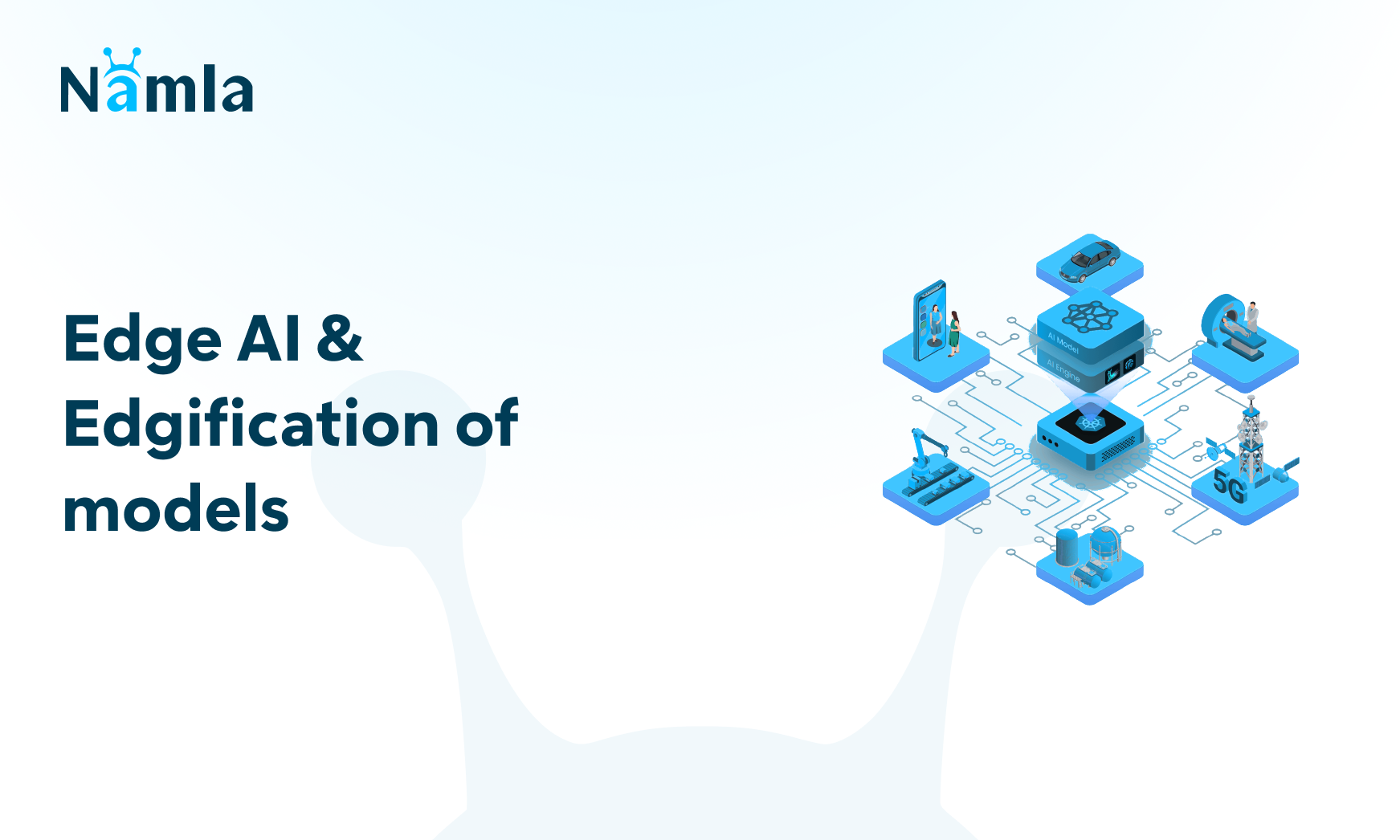Edge AI & Edgification of models

Published on June 13, 2022

Ready for a demo of
Namla
?
One of the several technologies that has benefited from the support and benefits that cloud computing offers is undoubtedly Artificial Intelligence. AI applications depend on a large amount of data, so these solutions require large-scale Cloud data centers for computationally and even storage-intensive processing tasks. There are several use cases for AI in the cloud that are suitable today in several areas. From the health care sector to industry and agriculture and even more.
However, the use of the Cloud can present certain limits. Indeed, many problems are always evoked as soon as we talk about Cloud Computing.
To process data and generate results, devices must be continuously connected to a cloud data center to which that data is sent. As a result, the cloud does not provide real-time analytics, which is exactly the opposite of what app users expect. This creates a new issue: latency and it can be observed in connected cameras in which real-time performance is strictly necessary. Another concern we face in Cloud Computing is high bandwidth. Transferring a huge amount of data to and from cloud computing platforms is both a technical and financial concern, as it involves high bandwidth, which will undoubtedly cause delays and data transport problems. Data confidentiality is also a major issue. With data privacy ranked at the top of the hierarchy of priority requirements, sending sensitive data and information to remote cloud servers over the Internet is a big risk.
Edge computing, which is gaining traction as a viable alternative to traditional cloud computing, has pushed AI and its solutions, such as machine learning and deep learning, closer to the source of data. As a result, a new frontier has emerged: AI at the edge. Away from cloud services, this new paradigm offers improved data protection, energy efficiency, and real-time performance.
Edge Computing
Edge Computing is a distributed architecture paradigm where cloud services and applications are moved partially or fully from central servers to the edge of the data sources.
It consists of processing data close to its source and transmitting only what is relevant to the Cloud. This reduces latency, saves bandwidth, and helps increase privacy by minimizing the transmission of sensitive data to the central servers in the cloud.
Edge IA: How to deploy AI models at the Edge
Compared to cloud’s servers, edge nodes have limited resources, it’s therefore necessary to adapt AI models, which are very expensive in terms of computation, memory, and energy consumption, to the constraints of the Edge, i.e., to reduce the complexity of the AI model to have a smaller model that can be deployed in Edge environments, which is called model compression. The most used techniques are pruning and quantization.
- ● Pruning removes redundant parameters (or neurons in Deep Learning models) that do not contribute significantly to the accuracy of the model, thus reducing computation.
- ● Quantization consists in converting the parameters of a model from a floating-point representation (32 bits) to lower bit representations (for example 8 bits), thus reducing memory storage, bandwidth, and power consumption.
Benefits of Edge AI
Some of the benefits of AI at the edge that can be seen are low latency, low bandwidth, and better data security.
The data is processed, and results are generated locally on the device by the AI applications that are now deployed at the edge of the network. As a result, the device does not need to be constantly linked to a cloud data center. The decision-making process is more efficient as its response speed is enhanced. It will also reduce network traffic and thus, low-bandwidth communications, as not all data will be transferred to the cloud.
The data does not need to be transported over the internet to be processed, as it will be processed locally. This will improve the security and confidentiality of sensitive data.